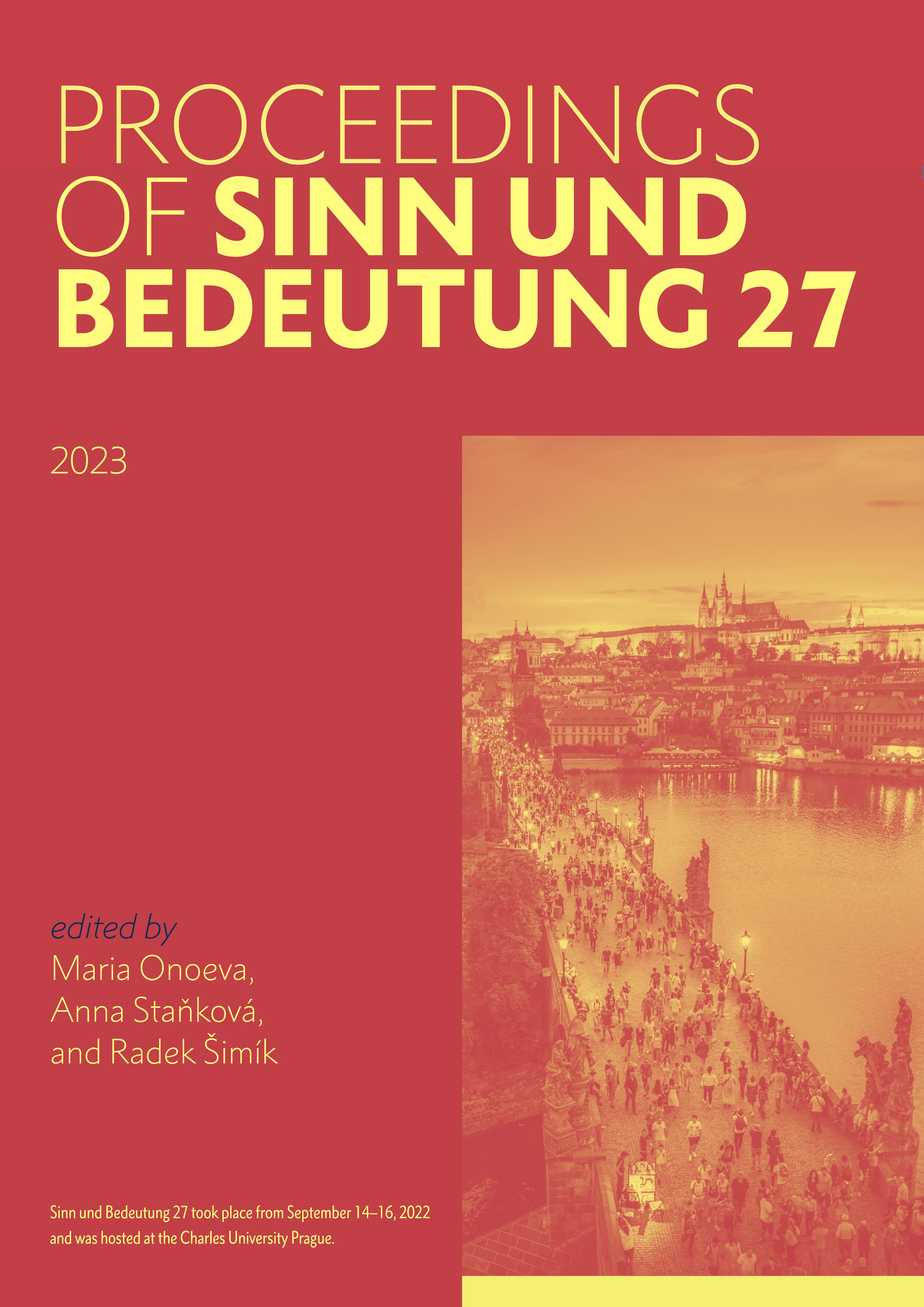English does too have a [REVERSE,+] polarity particle!
DOI:
https://doi.org/10.18148/sub/2023.v27.1091Abstract
This paper argues that the refutational use of English 'too' is a polarity particle requiring a positive prejacent and a negative antecedent—that is, what Farkas and Bruce (2010) call a [REVERSE,+] particle. This places refutational 'too' in a class with well-known [REVERSE,+] particles in other languages, such as French 'si' and German 'doch'. However, refutational 'too' exhibits a property that has not been observed in previous research on polarity particles crosslinguistically: It requires the addressee to have expressed an epistemic bias against the content of its prejacent. To account for this, this paper proposes that 'too' realizes a new polarity feature called [REFUTE], which presupposes that the negation of its prejacent is a member of the set of 'projected addressee commitments' introduced by Malamud and Stephenson (2015). The existence of the [REFUTE] feature opens new avenues for research on the typology of polarity particles.Downloads
Published
2023-11-30
How to Cite
Thomas, W. C. (2023). English does too have a [REVERSE,+] polarity particle!. Proceedings of Sinn Und Bedeutung, 27, 641–654. https://doi.org/10.18148/sub/2023.v27.1091
Issue
Section
Articles
License
Copyright (c) 2023 William Thomas

This work is licensed under a Creative Commons Attribution 4.0 International License.
https://creativecommons.org/licenses/by/4.0/
